Hi, Habr! My name is Jaroslav Medoks, in Sbertech I deal with the technologies of corporate and investment business. In this article we will talk about a quite ordinary suburban house near Moscow, which, at the whim of its owner, became a testing ground for solar energy.

In 2008, I was fortunate enough to purchase a house in the CNT in the near suburbs. In the process of habituation, it turned out that electricity is regularly cut off for different, mostly small, periods of time. This caused noticeable inconvenience, since the house is all electric, there is no gas. And when everything is electric, for example, heating or cooking, for a full life, you need a rather large peak power. Well, let's say, at least 6 kW. As a backup power source immediately comes to mind the generator. However, the generator of such power is a cumbersome, loud and unpleasantly smelling structure, therefore, it was considered as an alternative source only in case of prolonged blackouts. In the meantime, it was decided to ensure a comfortable stay in a country house with the help of an inverter and batteries. Those. make a sort of UPS, but for the whole house. At first glance, the task is quite simple.
However, the farther into the forest, the more firewood, as they say. Since uninterrupted power to such peak power is not cheap, I had to carefully study the topic in order not to be mistaken. For example, select the type of battery, determine the minimum capacity, select the type of inverter. And if with batteries everything is more or less clear, then there are many inverters, including Russian ones. Here I will make a small digression. In addition to regular outages, every house in the village was very limited in the maximum power that can be obtained from the network. And then the idea arose: for the time of peak loads, switch to an inverter and not depend on an unstable 220V network.
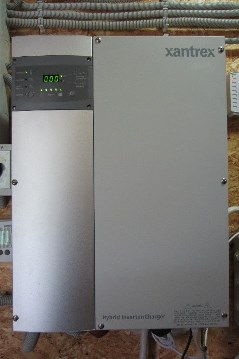
So, in addition to the power, sinusoidal output voltage, automatic restart, there was a requirement for automatic switching to the inverter when the power consumption threshold was exceeded. The range of devices has sharply narrowed. It turned out that in our market there is almost the only model (2010), which not only switches to generation, but knows how to maintain the network, i.e. add mains power with an inverted. This is a Xantrex XW model. This is not an inverter, but a work of art: it has two 220V inputs - a network and a generator with automatic generator input, it has a lot of settings for batteries, and different threshold values. There is a load shave function, energy sales back to the network, and many other useful features. But, most importantly, this inverter is initially considered as the center of the house’s energy supply system, and this center can take energy not only from the network and the generator, but also from alternative sources - from the sun, wind, mini hydro power plants, etc.
To do this, the system adds the appropriate energy converters and controllers, which are combined into a proprietary Xanbus network and work together.
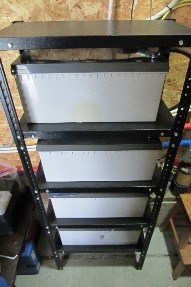
In general, as a system-thinking IT specialist relies on, the choice was made in favor of the most "clever" inverter Xantrex XW6048 and four successively connected 200 Ah AGM batteries. This is the solution of the problem in the moment and the groundwork for the future, and for this money is not a pity. And it was at this moment that the appearance of solar panels on the roof became just a matter of time, and not the question “need or not need?”. This also contributed to the successful configuration of the roof: a slope of about 45 degrees and orientation to the south. However, the gasoline generator appeared all the same before :)

It should be noted that for several years the generator was started only a couple of times, most of the power outages were blocked by an inverter with batteries. And for maximum comfort, an Arduino-based automatic generator start-up controller and a simple on-off relay for switching off unreserved loads (for example, gazebos at the site or a heated towel rail) was made. All this was established in 2010.
But, as already mentioned, the appearance of solar panels was predetermined. And in 2014, 6 320 watt FSM-320M single-crystal panels appeared.
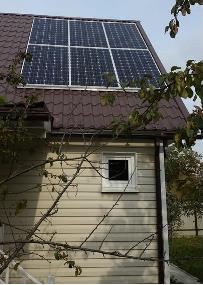
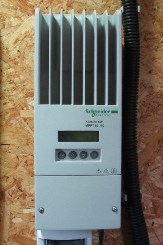
They are easy to find on the Internet. The total installed power in this way is 1920 watts. As you remember, the hybrid inverter can add energy from the network and from batteries, so the maximum power consumption does not have to match the maximum power of the panels. In addition to the panels with wires, connectors, fuses, it was necessary, of course, MPPT controller *, from the same line of equipment, but already under the wing of Schneider Electric. It, in turn, is connected via an Xanbus with an inverter and ensures the joint operation of devices, automatically reducing power consumption from the network in the presence of the Sun.
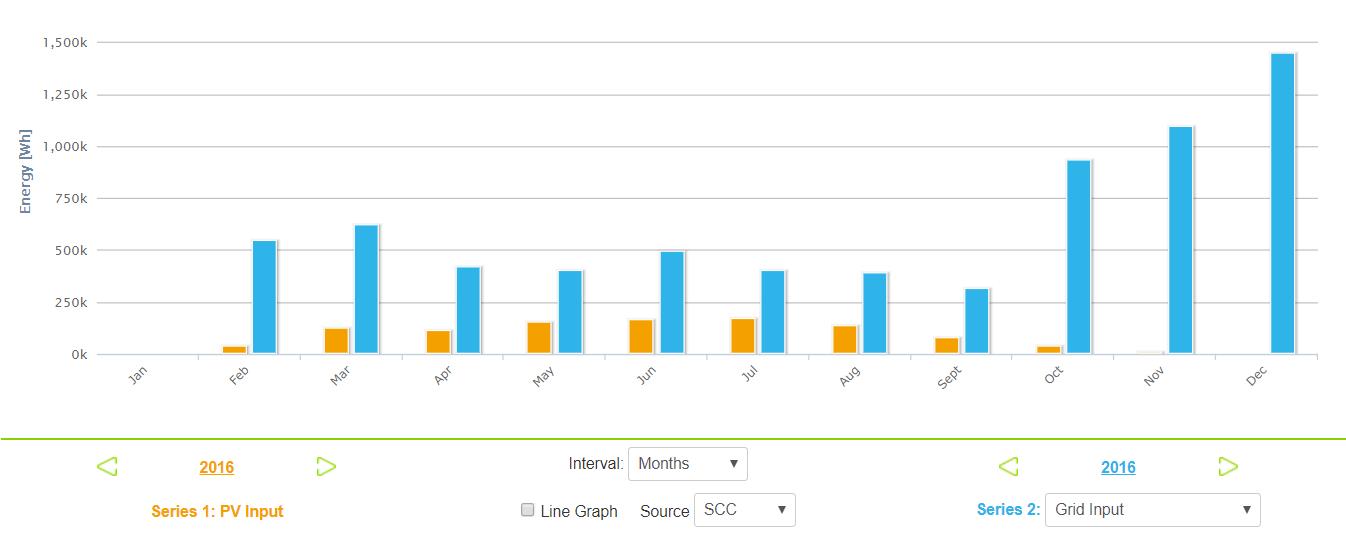 Figure 1 Comparison of the energy received from the Sun and from the 220V mains. Period February-December 2016
Figure 1 Comparison of the energy received from the Sun and from the 220V mains. Period February-December 2016Here are some numbers. Marked energy production begins in February and lasts until October. In the bar chart - statistics for 2016 (except January). The orange color shows how much energy is received (Wh.h) from the Sun, and blue - how much from the network. Obviously, to go to the sun is impossible even in summer. However, if the house has gas, then the most energy-intensive processes: heating, DHW and cooking can be excluded from the overall balance. Then in the summer you can live completely on solar electricity.
Some more numbers. At peaks, the power received from the Sun can reach up to 2,200 W, this usually happens in cool, but sunny weather, for example, in April or at the turn of summer and autumn. During the day, it is possible to collect up to 12 kWh of electric power maximum, while the peak power rarely exceeds 1600 watts. It should also be noted that if the batteries are charged, and the load in the house is small, the potential of the sun will be under-utilized. Abroad allowed to sell surplus energy to the network, thereby using solar panels at 100%. It is hoped that a similar practice will be legalized with us, then it will give a good impetus to the development of solar energy.
One way or another, but with the advent of solar panels, periodic short outages of network electricity are no longer terrible. In general, if there is a similar system with an alternative source and batteries, it is enough to have an additional low-power backup generator, for example, 1.5 kW, which ensures battery recharging and minimal consumption in the house. And peaks can be covered by an inverter from batteries.
However, solar electricity is not the only way to get energy from the sun. There is also a more efficient one, namely, the collection of solar heat using special collectors. They are very common in southern European countries. This method becomes especially attractive if there is no gas for heating and hot water preparation. With the help of collectors, heat can be obtained directly, without additional transformations. The main types of collectors - vacuum and flat. Vacuum saves performance in the winter, flat - cheaper and work better in the summer. It remains to decide what to choose and generally decide on the installation. After reading reviews about the work of various solar collectors and systems based on them, I decided to install a similar system. Since for me solar energy is not a matter of winter survival, I chose flat collectors made in Russia by YSolar. Two collectors are located on the roof next to the solar panels in 2015. According to the manufacturer, the power of such collectors is about 1.5 kW, i.e. Installed power was about 3 kW. It turned out even more powerful than installed electric solar panels.

Installing a solar collector is a more difficult task compared to a solar panel, since there are many more options to include it in a house's heating system. For example, it can be used only for hot water supply, or as an additional source of heat in the heating system. Various intermediate options are possible. And at the same time it is necessary to exclude the freezing of the system in winter, as well as overheating of the system when the sun is too hot in summer. And still need protection from burns with hot water. Well, and, of course, it is necessary to lay thermally insulated pipes, install a pumping station and an expansion tank, connect to a heat exchanger, install control electronics. I have entrusted all this work to a specialized company. And the main scheme of work was determined in the course of consultations with professionals. The goal (in addition to the engineering fan) is simple: to provide energy savings for the preparation of hot water supply and heating. Let me remind you, gas is not supplied to the house.
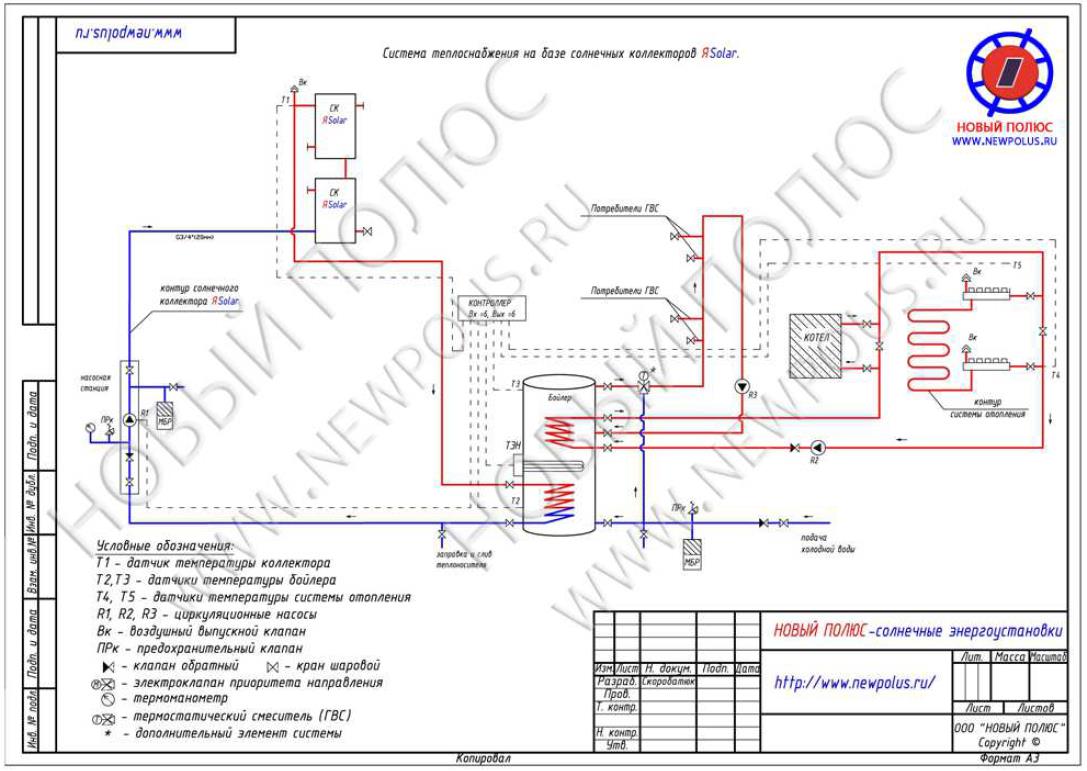 Figure 2 The agreed scheme of solar power plants.
Figure 2 The agreed scheme of solar power plants.The central element of the entire system is a 300-liter boiler for preparing hot water with two coil heat exchangers. Series-connected solar collectors are connected to the lower heat exchanger. And this is the only "entry point" of solar heat in the heating system and hot water supply at home. The sun warms the water in the boiler, the hot water rises up and gives off heat to the second, upper coil heat exchanger, which is connected in series to the single-circuit heating system of the house. Thus, in the heating system, there are two completely isolated circuits - solar and main, with an electric boiler. They are filled with antifreeze, and in the sun - a special with a wide range of operating temperatures. And the exchange of heat goes through the water of the hot water system. As a result, on a sunny day, we get both hot water and heat for heating. And heating is required even in summer, for example, for a bathroom. Along the way, due to heat extraction into the heating system, the task of protecting the boiler from overheating is being solved. Although, just in case, there is a compulsory inclusion of hot water recirculation for the discharge of excess heat. Looking ahead, I will say that during the monitoring of the system, the temperature of the hot water did not rise above 60 degrees Celsius. The resulting system has the following properties:
- Independent sources of heat are integrated into a single system: a solar collector, an electric boiler, a boiler heater.
- On a sunny day, electricity consumption for water heating and heating is reduced.
- The accumulation of heat in the boiler is provided to smooth the heating system and to provide heat to the house during a short-term power outage. Moreover, this property is also relevant in winter (when there is no Sun), since water is heated by the return line of the heating system through the upper boiler heat exchanger. When the boiler is turned off, the water transfers heat to the heating system.
- Reduced warm-up time at home in the offseason. Moreover, the average temperature in the house rises during the absence of inhabitants and the heating off.
- The total share of the Sun in the energy balance of the house has grown from 6-7% to about 15-20%.
As you can see, the system is quite effective, the goals are achieved. However, for now all the statements are qualitative. Or they are based on measurements, but measurements themselves are not available for collection, analysis, and use in control algorithms. For example, coolant temperatures at different points in the solar circuit are available for reading on the controller that controls the circulating pump. But, only there and available. Or, the current capacity and the “yield per day” of solar electricity are also available only within the Xanbus network (see above), and are not used for integrated control linked to the parameters of the heating system. These circumstances are pushing to search for ways to further develop the engineering systems at home. To make life in it more comfortable, more economical in relation to nature. And, at the same time, learn something new.
Well, where to start with what goals, it is already clear. First you need to learn how to measure temperatures at various points of the heating / hot water system, including the solar circuit. And already before the search for the final solution there is an understanding that the matter will not be limited to one dimension. But, about this in the next article. I'll show you
screenshot of the mobile application, which shows graphs of different temperatures, including a graph of the temperature of the coolant in the solar circuit.